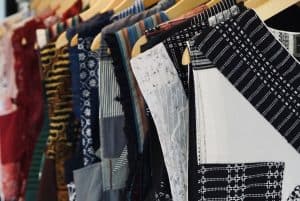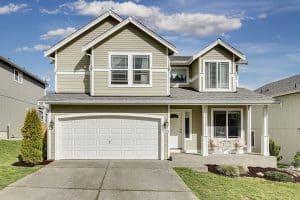Hardwood flooring is a popular choice for many Austin homes. Proper care can help keep them looking new & prevent costly repairs. This includes regular cleaning & high-quality products.
Choosing the right floors can be tricky. But a skilled owner-builder consultant can make the process easier. They can handle additional city inspections, assist with planning and provide expert installation.
Eco-friendly flooring options
Eco-friendly flooring options offer homeowners a wide range of sustainable choices that balance aesthetics, durability and environmental responsibility. They include reclaimed wood, bamboo and cork, linoleum and more. Many of these materials exhibit water-resistant qualities and are made using energy-efficient manufacturing processes, making them a great choice for Austin homes.
Choosing the right type of hardwood floor for your home also plays an important role in minimizing your ecological footprint, and can enhance your Austin home’s flooring durability. The first step is to look for products that are certified by the Forest Stewardship Council (FSC). This ensures that any wood used in your floors has been harvested from a responsible forest.
Another great way to reduce your carbon footprint is to choose flooring from local suppliers and contractors. This minimizes transportation emissions and helps your flooring last longer by ensuring proper installation. Similarly, choose flooring that can be refinished or repurposed after use to minimize the demand for new materials.
Allergies and sensitivity concerns often prompt homeowners to consider eco-friendly alternatives, as well. This is because natural materials like bamboo and cork are naturally hypoallergenic, while many traditional flooring choices can trap harmful allergens like pet dander. Moreover, laminate flooring is a great alternative to hardwood because it resists scratches and stains, while being easy to clean and requiring low maintenance.
Other durable and versatile eco-friendly flooring options include recycled plastic and cork, which have been shown to be extremely resilient in high-traffic areas. When considering these flooring options, it is important to consider the function of each room in your home. For example, kitchens and bathrooms require durable flooring that is water-resistant, while living rooms and bedrooms are ideally suited to softer, more comfortable materials.
Resilient homes
Resilient homes are designed to withstand natural disasters such as hurricanes, floods, earthquakes, and wildfires. They use specialized building materials like concrete and insulated concrete forms (ICFs) to protect the structure and occupants from severe weather events. They also feature safety features such as reinforced roofs, impact-resistant windows, and elevated foundations. Additionally, resilient homes are constructed with sustainable features to reduce energy consumption and environmental impacts.
Resilient home construction is location specific, so architects build the structures to withstand typical weather patterns for the area where they’re located. This allows homeowners to maintain a safe, livable environment during storms and power outages. It also helps them avoid expensive repair costs and rebuilding expenses. Furthermore, resilient homes are designed to be able to withstand disasters without the need for emergency services or public shelters, reducing the strain on local resources and freeing up these supplies for more vulnerable communities.
One of the key elements of a resilient home is the water system. Most residential buildings rely on water that is pumped from distant sources at a high energetic cost. A resilient home minimizes its dependence on these water sources by using large cisterns to store rainwater and manage stormwater runoff. This water is then infiltrated into the groundwater system to recharge and replenish it.
Resilient homes have a higher upfront cost than traditional structures, but they’re often more affordable in the long run. They can save homeowners money on maintenance and repair costs, as well as insurance premiums. Additionally, they can increase resale value and attract buyers who are concerned about climate change impacts. Additionally, these properties can qualify for tax credits and other incentives for builders.
Mix-and-match flooring designs
Homeowners are increasingly embracing mix-and-match flooring to add character and style. From herringbone patterns to unique tile designs, homeowners are looking to create a striking focal point that stands out in the room.
Wide plank engineered wood floors are making a comeback in 2024. This flooring option features wider individual planks that highlight more of the wood’s natural variation and grain. This look is complemented by new technology that enhances durability and comfort, such as moisture-resistant and temperature-regulating finishes. These floors are a durable choice for high-traffic areas, and they can be finished to achieve a modern or rustic look.
As a city that values creativity and individuality, Austinites are drawn to flooring options that showcase their own unique personalities. Organic textures and natural tones are a popular choice, as they complement the surrounding Hill Country landscape. Natural-looking materials like hand-scraped wood, rustic tiles, and natural stone add warmth and authenticity to the space.
Color groupings are also a popular trend for flooring. Airy shades of gray and white are gaining popularity for their ability to brighten the room. These colors are also easy to clean and don’t show dust, dirt, or pet stains as easily.
The key to maintaining a hardwood floor is regular cleaning and proactive pest treatments. Using insect repellents and proper dusting techniques can help protect the finish from moisture damage and keep the floor healthy and beautiful for years to come. Regular wood inspections and quick problem-fixing can also prevent the growth of mold and other harmful organisms that may cause damage to the floor. Hiring expert workers that are familiar with the local climate and wood species is also essential to avoiding problems such as cupping, buckling, and flooring gaps.
Low-maintenance flooring options

The active lifestyle in Austin has led to the popularity of flooring options that can withstand heavy foot traffic and resist the effects of wear and tear. Waterproof, scratch-resistant materials like luxury vinyl plank (LVP) and tile are great choices for busy households or pet-friendly homes in need of a floor that can look good with minimal upkeep.
Hardwood flooring has a timeless appeal, adding warmth and charm to any room in your Austin home. However, the damp climate can shorten its lifespan and cause warping, a problem that is easily avoided by regularly using a dehumidifier. It’s also important to remember that hardwood floors aren’t the best choice for homes with children or pets.
Carpet is a popular option, but it often traps allergens and isn’t very hygienic. It is also a common target for pet scratches and accidents. Luxury vinyl and laminate offer an eco-friendly alternative, with products such as Ingenious Plank from Armstrong Flooring featuring a hybrid resilient core that is 100% PVC-free, free of ortho-phthalates, halogens, plasticizers, chlorine, and conflict minerals.
Luxury vinyl and laminate are waterproof, so they’re a great choice for rooms such as bathrooms, basements, laundry areas, and kitchens. They also require less maintenance than wood or tile, with a simple sweeping and occasional mopping being all you need to keep them looking beautiful.
Natural and organic textures
For Austin homeowners seeking a more organic aesthetic, earthy textures can bring life to their home design. Using natural materials like stone countertops, wood flooring, and woven textiles creates a sense of comfort and stability. Incorporating natural elements into a room’s décor also helps to foster wellness, as these designs integrate people with nature by maximizing access to light and greenery.
Many textured materials, such as reclaimed wood, rattan, and jute are sustainable by nature, making them a great choice for eco-friendly interiors. Organic finishes like these are becoming increasingly popular in modern and transitional homes, as they complement the clean lines of contemporary architecture while promoting a sense of balance and harmony with nature.
Incorporating herringbone or chevron wood patterns in 2024 custom homes can elevate the aesthetic of a space, adding a sense of luxury and intrigue to the floor’s surface. These patterns offer a unique alternative to traditional parquet hardwood flooring, while maintaining the same durability and easy maintenance of tile and hardwood.
As designers push beyond the imagined limits of indoor-outdoor living, they’re dissolving the boundaries between our homes and their surroundings. For example, a board-formed concrete staircase at the Cuernavaca Residence in Barton Hills allows owners to take in views of trees and cliffs from their living rooms, creating a sense of connection with the landscape around them.
Whether you’re incorporating eco-friendly upgrades into your renovation or simply seeking a more organic feel, working with a skilled architect can help you find the best design solutions for your home. Talk to your trusted local builder about the pros and cons of each texture to choose the right one for your home’s design theme.




